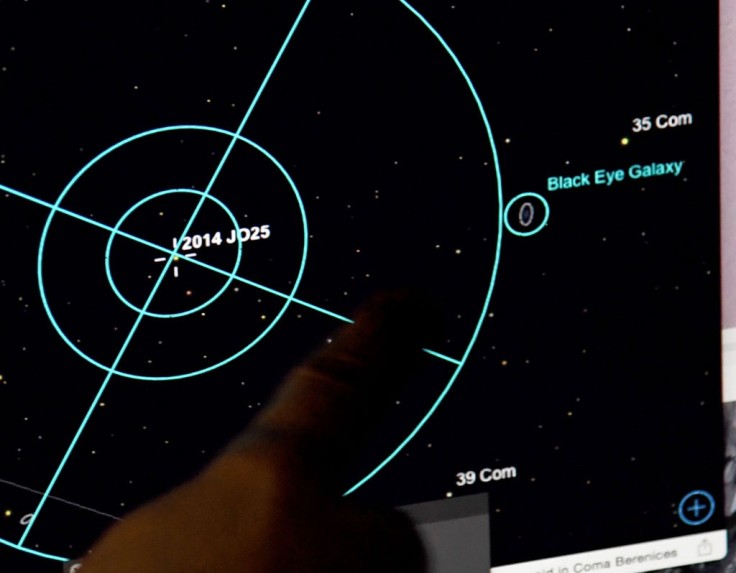
A "potentially hazardous" asteroid is passing by Earth next week. Many astronomers are pointing their telescopes in the asteroid's direction in hopes of recording the event.
The space rock is estimated to fly by more than 3 million miles away from Earth, which is approximately 12 times farther than the Moon. This means the asteroid will pose no danger to the planet as it passes by from a relatively safe distance.
NASA Asteroid Tracker: The Eiffel Tower-Sized Asteroid
The NASA Center for Near-Earth Object Studies (CNEOS) calls this incoming asteroid 138971 (2001 CB21). They estimate its size to be 3,940 feet in diameter, which is significantly bigger than the 2,720-feet Burj Khalifa in Dubai (via Newsweek).
The asteroid will reach its closest point to Earth on March 4 at 2:59 AM ET. Note that the asteroid will travel more than 26,800 miles per hour during its passing.
For reference, NASA generally categorizes all asteroids that are big in diameter and close enough to the planet as "Potentially Hazardous Asteroid" (PHA). However, this label does not imply that the asteroid is a threat to the Earth. So fans can be assured that 2001 CB21 is not on a collision course with Earth.
NASA Asteroid Photos: The Asteroid 2001 CB21
Many excited space fans have started searching for signs on the passing asteroid. Gianluca Masi, an astronomer at the Virtual Telescope Project in Italy, managed to capture the 2001 CB21 in a short video clip.
The Virtual Telescope tweeted the details on the "Potentially Hazardous Asteroid (138971) 2001 CB21." The clip was taken on Wednesday, Feb 23, between 9:31 and 10:10 PM UTC.
Potentially Hazardous Asteroid (138971) #2001CB21 was captured last night while safely approaching us. Here they are our latest image 📸 and video 📽️
— Virtual Telescope (@VirtualTelescop) February 24, 2022
🔭
Enjoy here: https://t.co/gQdNRK3q6O pic.twitter.com/O8eutfM4JG
Keep in mind that since the asteroid is 6.2 million miles away, it can only be seen as a white dot in the center of the image.
The Virtual Telescope explained in their blog post that the photo was taken from a single 120-second exposure by the PlaneWave 17" robotic telescope unit.
How to Watch the Passing Asteroid
When asked about the asteroid discovery, Masi told Newsweek, "the advanced technology we use makes our telescopes among the best ones on the planet to track and share even the fastest, demanding asteroids." He also added, "actually, it is the continuously improving technology which is making it possible for us to spot smaller and smaller objects, which we were simply missing before."
Note that The Virtual Telescope Project plans to host a live stream of the Asteroid passing overhead. Its WebTV will start on March 4, 3 AM UTC, so fans are recommended to prepare for the date.
Fans are also advised to log in to the event at least an hour before the schedule so they can still watch the introduction. For others who might miss the live stream, the playback should be available after the event on YouTube. More details about the live stream should be available the closer it gets to the event date.
Related Article: NASA Mars Rover Pictures: Perseverance Snaps Out-of-Place Photo of Drill Bit From 2021!









